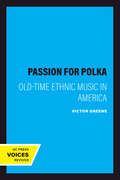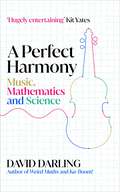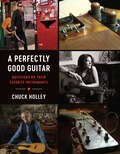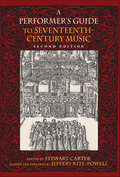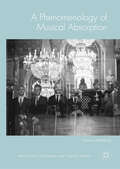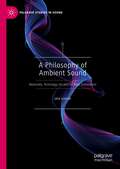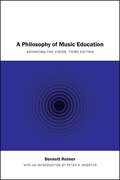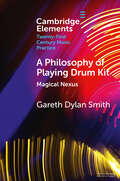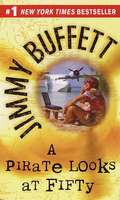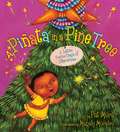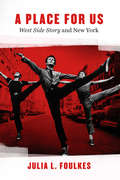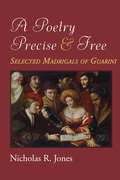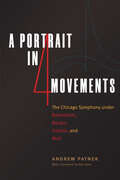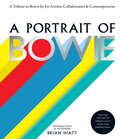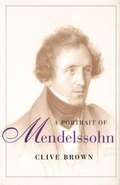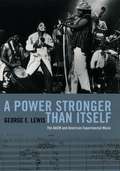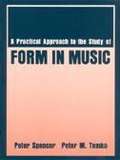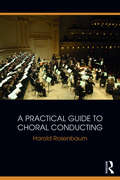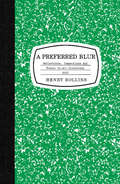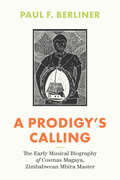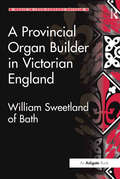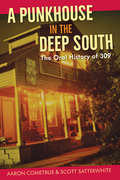- Table View
- List View
A Passion for Polka: Old-Time Ethnic Music in America
by Victor GreeneNot so long ago, songs by the Andrews Sisters and Lawrence Welk blasted from phonographs, lilted over the radio, and dazzled television viewers across the country. Lending star quality to the ethnic music of Poles, Italians, Slovaks, Jews, and Scandinavians, luminaries like Frankie Yankovic, the Polka King, and "Whoopee John" Wilfart became household names to millions of Americans. In this vivid and engaging book, Victor Greene uncovers a wonderful corner of American social history as he traces the popularization of old-time ethnic music from the turn of the century to the 1960s. Drawing on newspaper clippings, private collections, ethnic societies, photographs, recordings, and interviews with musicians and promoters, Greene chronicles the emergence of a new mass culture that drew heavily on the vivid color, music, and dance of ethnic communities.In this story of American ethnic music, with its countless entertainers performing never-forgotten tunes in hundreds of small cities around the country, Greene revises our notion of how many Americans experienced cultural life. In the polka belt, extending from Connecticut to Nebraska and from Texas up to Minnesota and the Dakotas, not only were polkas, laendlers, schottisches, and waltzes a musical passion, but they shone a scintillating new light on the American cultural landscape. Greene follows the fortunes of groups like the Gold Chain Bohemians, illuminating the development of an important segment of American popular music that fed the craze for international dance music. And even though old-time music declined in the 1960s, overtaken by rock and roll, a new Grammy for the polka was initiated in 1986. In its ebullience and vitality, the genre endures.
A Perfect Harmony: Music, Mathematics and Science
by David DarlingFrom the earliest of civilisations, humans have found ways to make music, whether through makeshift drums or artfully drilled bone flutes. But how did music – effectively little more than a series of certain tones and rhythms – become so integral to the human experience? Untangling the curious links between notes and number, musical perception, psychology and physics, David Darling examines the fascinating science behind music, from its Palaeolithic origins to the present. Revealing surprising connections and busting pervasive myths, A Perfect Harmony asks: Why do musicians tend to be better at maths than non-musicians? Why do we find some pieces sad and others happy? Will playing Mozart to babies predispose them to genius? Could an AI write the perfect symphony?
A Perfectly Good Guitar: Musicians on Their Favorite Instruments
by Chuck HolleyAsk guitar players about their instruments, and you&’re likely to get a story—where the guitar came from, or what makes it unique, or why the player will never part with it. Most guitarists have strong feelings about their primary tool, and some are downright passionate about their axes. Chuck Holley is a professional photographer and writer who loves music and listening to musicians talk about their trade. For several years, he has been photographing guitarists with their prized instruments and collecting their stories. This beautifully illustrated book presents these stories in revelatory photographs and words. The guitarists included in this book range from high-profile performers, including Rosanne Cash, Guy Clark, Laurence Juber, Jorma Kaukonen, JD Souther, Bill Frisell, Dave Alvin, and Kelly Willis, to renowned studio musicians and band members. Holley&’s beautifully composed photographs portray them with their favorite guitar, including detail shots of the instrument. Accompanying the photographs are the musicians&’ stories about the Gibsons, Fenders, Martins, and others that have become the guitar in their lives, the one that has a special lineage or intangible qualities of sustain, tone, clarity, and comfort that make it irreplaceable. Several musicians talk about how the guitar chose them, while others recount stories of guitars lost or stolen and then serendipitously recovered. Together, these photographs and stories underscore the great pleasure of performing with an instrument that&’s become a trusted friend with a personality all its own.
A Performer's Guide to Renaissance Music (Publications of the Early Music Institute)
by Jeffery Kite-PowellRevised and expanded since it first appeared in 1991, the guide features two new chapters on ornamentation and rehearsal techniques, as well as updated reference materials, internet resources, and other new material made available only in the last decade.The guide is comprised of focused chapters on performance practice issues such as vocal and choral music; various types of ensembles; profiles of specific instruments; instrumentation; performance practice issues; theory; dance; regional profiles of Renaissance music; and guidelines for directors. The format addresses the widest possible audience for early music, including amateur and professional performers, musicologists, theorists, and educators.
A Performer's Guide to Seventeenth-Century Music (Publications of the Early Music Institute)
by Jeffery Kite-PowellRevised and expanded, A Performer's Guide to Seventeenth Century Music is a comprehensive reference guide for students and professional musicians. The book contains useful material on vocal and choral music and style; instrumentation; performance practice; ornamentation, tuning, temperament; meter and tempo; basso continuo; dance; theatrical production; and much more. The volume includes new chapters on the violin, the violoncello and violone, and the trombone—as well as updated and expanded reference materials, internet resources, and other newly available material. This highly accessible handbook will prove a welcome reference for any musician or singer interested in historically informed performance.
A Phenomenology of Musical Absorption
by Simon HøffdingThis book presents a detailed analysis of what it means to be absorbed in playing music. Based on interviews with one of the world’s leading classical ensembles, “The Danish String Quartet” (DSQ), it debunks the myth that experts cannot reflect while performing, but also shows that intense absorption is not something that can be achieved through will, intention, prediction or planning – it remains something individuals have to be receptive to. Based in the phenomenological tradition of Husserl and Merleau-Ponty as well as of Dan Zahavi and Shaun Gallagher, it lays out the conditions and essential structures of musical absorption. Employing the lived experience of the DSQ members, it also engages and challenges core ideas in phenomenology, philosophy of mind, enactivism, expertise studies, musical psychology, flow theory, aesthetics, dream and sleep studies, psychopathology and social ontology, and proposes a method that integrates phenomenology and cognitive science.
A Philosophy of Ambient Sound: Materiality, Technology, Art and the Sonic Environment (Palgrave Studies in Sound)
by Ulrik SchmidtThis book presents the first book-length study of ambient sound as a key issue in sound studies and sonic philosophy. Taking a broad, media-philosophical approach, it explores ambient sound as a basic dimension of the sonic environment, sonic technologies, sonic arts and the material staging of listening.Through analyses of key concepts such as surroundability, mediatization, immanence, synthetization and continuous variation, the book elucidates how ambient aspects of sound influence our conceptions of what sound is and how it affects us by exposing sound’s relation to basic categories such as space, time, environment, medium and materiality. It also illuminates how the strategic production of ambient sound constitutes a leading aesthetic paradigm that has been a decisive factor in the shaping of the modern sonic environment – from key developments in experimental and popular music, sound art and cinematic sound design to the architectural-technological construction of listening spaces in concert halls and theaters and in current streaming infrastructures, digital surround sound and the everyday aesthetics of headphone listening.
A Philosophy of Music Education: Advancing the Vision, Third Edition
by Bennett ReimerBennett Reimer's A Philosophy of Music Education asserts that the nature and value of music education are determined primarily by the nature and value of music. Originally published in 1970 (with the third edition originally published in 2003), this text relates findings in the field of aesthetics to their implications for the practice of music education, thus emphasizing practical applications that students and future educators can employ in their teaching and learning. It addresses an increasingly diverse world in which music is viewed not as a singular practice but as a multitude of related practices. Reimer believes that music has characteristics that make it recognizably and distinctively a practice or an "art"; that these characteristics can be identified to a reasonable and useful degree (but no doubt never definitively); that music is of value to humans and their communities in a variety of ways related to these characteristics; and that the primary mission of music education is to make musical values widely and deeply available. Each chapter includes case studies ("Riffs") and questions for discussion/exploration ("Etudes") that enhance student learning. This reprint edition includes a new introduction by Peter R. Webster that sets Reimer's work in the context of the development of music education pedagogy and illuminates why this remains an important text for today's students. An excellent introductory text for undergraduate or more advanced music education students, A Philosophy of Music Education remains the best single introduction to this important and growing field.
A Philosophy of Playing Drum Kit: Magical Nexus (Elements in Twenty-First Century Music Practice)
by Gareth Dylan SmithThe author is a drummer with experience in a variety of musical genres and contexts, with emphasis on rock and related styles. This auto ethnographic Element presents the author's philosophy of playing drum kit. The text explains how playing drum kit matters to this musician and may resonate with others to whom making music matters in similar ways. The Element contains audio files of music in which the author plays drum kit in the ensemble settings described. There are photos of the author's drums and of him drumming. Based on June Boyce-Tillman's non-religious model of holistic spirituality and Tim Ingold's notion of correspondences, the author describes how playing drum kit enables him to experience transcendence – the magical nexus at which Materials, Construction, Values/Culture and Expression meet. Each of these domains, and the magic derived from their combination, is illustrated through examples of the author's live and recorded musical collaborations.
A Pirate Looks at Fifty
by Jimmy BuffettBuffett takes the occasion of his 50th birthday to tell us about himself, doing so with candor and modesty, talking about his marriage, his children and 'a lot of things on the good old planet Earth'
A Piñata in a Pine Tree: A Latina Twelve Days of Christmas
by Pat Mora"The Twelve Days of Christmas" has been a beloved carol for centuries. In this joyful new version, the traditional gifts have been replaced by Latin-flavored offerings with a tinge of magic. A secret amiga delivers presents to a little girl, filling the pages with brightly colored piñatas, burritos bailando (dancing donkeys), lunitas cantando (singing moons), and more. There are things to find and count and words in Spanish on every page, with pronunciations provided right in the pictures, and a glossary and music at the end of the book.
A Place for Us: “West Side Story” and New York
by Julia L. FoulkesFrom its Broadway debut to the Oscar-winning film to countless amateur productions, West Side Story is nothing less than an American touchstone--an updating of Shakespeare vividly realized in a rapidly changing postwar New York. That vision of postwar New York is at the heart of Julia L. Foulkes's A Place for Us. A lifelong fan of the show, Foulkes became interested in its history when she made an unexpected discovery: scenes for the iconic film version were shot on the demolition site destined to become part of the Lincoln Center redevelopment area--a crowning jewel of postwar urban renewal. Foulkes interweaves the story of the creation of the musical and film with the remaking of the Upper West Side and the larger tale of New York's postwar aspirations. Making unprecedented use of director and choreographer Jerome Robbins's revelatory papers, she shows the crucial role played by the political commitments of Robbins and his fellow gay, Jewish collaborators, Leonard Bernstein and Arthur Laurents. Their determination to evoke life in New York as it was actually lived helped give West Side Story its unshakable sense of place even as it put forward a vision of a new, vigorous, determinedly multicultural American city. Beautifully written and full of surprises for even the most dedicated West Side Story fan, A Place for Us is a revelatory new exploration of an American classic.
A Poetry Precise and Free: Selected Madrigals of Guarini
by Nicholas JonesA Poetry Precise and Free collects 150 lyric poems by the Renaissance Italian poet Giovanni Battista Guarini in new translations, accompanied by the Italian originals and commentary that will enlighten and engage both scholars and general readers. Guarini’s madrigals provide insight into northern Italian court culture of the late Renaissance, when poetry and music were enjoyed as companion arts. Hundreds of composers of Guarini’s day set his lyric poems to music. Primarily known today in their vocal settings, most famously those of Claudio Monteverdi, the poems merit appreciation in their own right. This volume is organized into ten sections, grouping the madrigals around themes such as the anguish of passion, the asymmetry of desire, the incursions of jealousy, and the possibility of mutual bliss. Nicholas R. Jones renders Guarini’s poetry into accessible contemporary English verse that nevertheless stays true to the substance and form of the original texts, reflecting their roots in the Petrarchan poetic tradition and displaying the emotion and musicality that made these lyrics so popular from the start. A substantive introduction provides cultural context for the madrigals and their musical settings; brief commentaries follow each translation to illuminate aspects of poetic and rhetorical craft. An extensive appendix lists the madrigal compositions that set these lyrics for vocal performance. The book fills a major gap in the scholarship on Guarini’s literary legacy. It will appeal to scholars of literature, Renaissance studies, and musicology, early-music performers, and general readers interested in poetry and classical music.
A Portrait in Four Movements: The Chicago Symphony under Barenboim, Boulez, Haitink, and Muti
by Andrew Patner“Playing in an orchestra in an intelligent way is the best school for democracy.”—Daniel Barenboim The Chicago Symphony Orchestra has been led by a storied group of conductors. And from 1994 to 2015, through the best work of Daniel Barenboim, Pierre Boulez, Bernard Haitink, and Riccardo Muti, Andrew Patner was right there. As music critic for the Chicago Sun-Times and WFMT radio, Patner was able to trace the arc of the CSO’s changing repertories, all while cultivating a deep rapport with its four principal conductors. This book assembles Patner’s reviews of the concerts given by the CSO during this time, as well as transcripts of his remarkable radio interviews with these colossal figures. These pages hold tidbits for the curious, such as Patner’s “driving survey” that playfully ranks the Maestri he knew on a scale of “total comfort” to “fright level five,” and the observation that Muti appears to be a southpaw on the baseball field. Moving easily between registers, they also open revealing windows onto the sometimes difficult pasts that brought these conductors to music in the first place, including Boulez’s and Haitink’s heartbreaking experiences of Nazi occupation in their native countries as children. Throughout, these reviews and interviews are threaded together with insights about the power of music and the techniques behind it—from the conductors’ varied approaches to research, preparing scores, and interacting with other musicians, to how the sound and personality of the orchestra evolved over time, to the ways that we can all learn to listen better and hear more in the music we love. Featuring a foreword by fellow critic Alex Ross on the ethos and humor that informed Patner’s writing, as well as an introduction and extensive historical commentary by musicologist Douglas W. Shadle, this book offers a rich portrait of the musical life of Chicago through the eyes and ears of one of its most beloved critics.
A Portrait of Bowie: A tribute to Bowie by his artistic collaborators and contemporaries
by Brian HiattA strikingly unique tribute to David Bowie, comprising a collection of 40 visual portraits of the icon throughout his career, and text tributes by his artistic collaborators and contemporaries.
A Portrait of Bowie: A tribute to Bowie by his artistic collaborators and contemporaries
by Brian HiattHIS LIFE WAS A WORK OF ARTNow, artists and musicians who worked with David Bowie during his lifetime - or who were his contemporaries - pay tribute to the icon through their own words on what it was like to work in collaboration with a man whose fluid artistic genius repeatedly broke boundaries, right up until his death. Alongside these text tributes are 40 stunning illustrative and photographic portraits of Bowie throughout his career. The contributing artists and photographers include (alphabetically): Edward Bell, Derek Boshier, Anton Corbijn, Kevin Cummins, Chuck Connelly, Chalkie Davies, Stephen Finer, Greg Gorman, Derry Moore, Terry O'Neill, Mick Rock, Masayoshi Sukita, George Underwood, Justin de Villeneuve and more. Alongside these remarkable portraits are insightful, personal written pieces by his contemporaries, and musicians and artists who worked closely with Bowie, including Zachary Alford, Carlos Alomar, Toni Basil, Gail Ann Dorsey, Mike Garson, Dana Gillespie, Debbie Harry and Chris Stein, Cyndi Lauper, and Nile Rodgers, among others. The book is curated by Brian Hiatt, of Rolling Stone magazine, as General Editor.** Newly revised and improved ebook edition, optimized for both small- and large-screen devices **
A Portrait of Mendelssohn
by Clive BrownClive Brown draws a different picture of Felix Mendelssohn's personality and work.
A Power Stronger Than Itself: The AACM and American Experimental Music
by George E. LewisFounded in 1965 and still active today, the Association for the Advancement of Creative Musicians (AACM) is an American institution with an international reputation. From its working-class roots on the South Side of Chicago, the AACM went on to forge an extensive legacy of cultural and social experimentation, crossing both musical and racial boundaries. The success of individual members and ensembles such as Muhal Richard Abrams, the Art Ensemble of Chicago, and Anthony Braxton has been matched by the enormous influence of the collective itself in inspiring a generation of musical experimentalists. George E. Lewis, who joined the collective as a teenager in 1971, establishes the full importance and vitality of the AACM with this communal history, written with a symphonic sweep that draws on a cross-generational chorus of voices and a rich collection of rare images. Faced with shrinking economic opportunities in Chicago and a segregated music industry, the original members of the AACM found inspiration in the civil rights movement's call for change through self-determination and collective action. These musicians pooled their individual strengths in a new organization powerfully committed to a forward-thinking approach to musical creation and performance. Evolving a range of experimental methods, from invented instruments and unusual musical scores to improvisation and the early use of computers, the AACM challenged the borders separating classical music and jazz.
A Power Stronger Than Itself: The AACM and American Experimental Music (The\kenneth Nebenzahl, Jr. , Lectures In The History Of Cartography Ser.)
by George E. LewisFounded in 1965 and still active today, the Association for the Advancement of Creative Musicians (AACM) is an American institution with an international reputation. George E. Lewis, who joined the collective as a teenager in 1971, establishes the full importance and vitality of the AACM with this communal history, written with a symphonic sweep that draws on a cross-generational chorus of voices and a rich collection of rare images. Moving from Chicago to New York to Paris, and from founding member Steve McCall’s kitchen table to Carnegie Hall, A Power Stronger Than Itself uncovers a vibrant, multicultural universe and brings to light a major piece of the history of avant-garde music and art.
A Practical Approach to the Study of Form in Music
by Peter Spencer Peter M. TemkoLearning music's organizing principles . . . Approaching the study of form as an exercise in perceiving the interaction of a number of discrete musical events, Spencer and Temko's book embodies much more than a search for visual clues. Students of form develop perceptual tools that allow them to proceed from the aural experience to an understanding of the arch-principles upon which music is organized. The authors hold that the organizing principles of a given piece of music may be gleaned from studying: the internal attributes that give a section its specific identity; the functional relations between sections; the ordering of those sections.
A Practical Guide to Choral Conducting
by Harold RosenbaumRooted in the experience of a professional choral conductor, this book provides a guide to practical issues facing conductors of choral ensembles at all levels, from youth choruses to university ensembles, church and community choirs, and professional vocal groups. Paired with the discussion of practical challenges is a discussion of over fifty key works from the choral literature, with performance suggestions to aid the choral conductor in directing each piece. Dealing with often-overlooked yet vital considerations such as how to work with composers, recording, concert halls, and choral tours, A Practical Guide to Choral Conducting offers a valuable resource for both emerging choral conductors and students of choral conducting at the undergraduate and graduate levels.
A Preferred Blur
by Henry Rollins2007 was a very busy year for Henry Rollins. He traveled to Iran, Syria, Lebanon, and Pakistan, where he was staying when Prime Minister Benazir Bhutto was assassinated. While traveling, Rollins performed numerous spoken word shows and worked on films, his IFC television show, and Harmony in My Head, his popular weekly radio show. In short, a quintessentially Rollins-ian year: sleepless, nonstop, and highly productive. A Preferred Blur contains stories written in the form of journal entries from Rollins' travels throughout the year. As in his other travel-related books and journals, Rollins - Detail magazine's 1994 Man of the Year - writes not only about his own life and work, but of music, current affairs, and the world around him with humor, insight, and brutal honesty.
A Prodigy's Calling: The Early Musical Biography of Cosmas Magaya, Zimbabwean Mbira Master (Chicago Studies in Ethnomusicology)
by Paul F. BerlinerThe coming-of-age story of a master musician in mid-twentieth century colonial Rhodesia as he learns his community’s most cherished art, all while navigating profound social transformation. Ethnomusicologist Paul F. Berliner has been studying Zimbabwean mbira for more than fifty years. When he first arrived in what was then Rhodesia after the nation declared independence from the United Kingdom, he met Cosmas Magaya, a mbira player who would become his teacher and lifelong collaborator. A Prodigy’s Calling chronicles the early years of Magaya’s life, documenting the master mbira player’s journey from child prodigy to established expert. As a child, Magaya was immersed in mbira music through his father’s work as a healer and spirit medium. As Magaya grew, so too did his world; his performances extended beyond the family compound as his skill and knowledge increased, bringing him into contact with a society fraught with decolonial conflict. Following Magaya’s childhood, readers will learn how his upbringing guided his journey through the community’s social networks and how his early sensibilities, proclivities, and talents shaped his development. At the same time, his deepening engagement with music and the ancestors was affected by overlapping tensions between Shona cosmology and Christian ideology, rural and urban lifestyles, and the escalating African nationalist struggle and the white supremacist state. While Magaya’s story reflects profound social changes in the nation, it is also a story of musical apprenticeship. Readers following Magaya’s discovery of ever finer details in the music’s richly layered patterns will enhance their ability to hear mbira music’s forms, variations, and sonic qualities. Linocut illustrations by South African artist Lucas Bambo bring the narrative to life, and Berliner’s spirited storytelling is accompanied by QR codes that take readers directly to recordings of music as Magaya learns it. Appendices for musicians interested in learning or improving their mbira playing complement the story of Magaya’s early life. Inviting the reader into the very tradition it recounts, the book offers intimate insights into the relationships among music, Shona cosmology, and colonial politics in everyday life.
A Provincial Organ Builder in Victorian England: William Sweetland of Bath (Music in Nineteenth-Century Britain)
by Gordon D.W. CurtisWilliam Sweetland was a Bath organ builder who flourished from c.1847 to 1902 during which time he built about 300 organs, mostly for churches and chapels in Somerset, Gloucestershire and Wiltshire, but also for locations scattered south of a line from the Wirral to the Wash. Gordon Curtis places this work of a provincial organ builder in the wider context of English musical life in the latter half of the nineteenth century. An introductory chapter reviews the provincial musical scene and sets the organ in the context of religious worship, public concerts and domestic music-making. The book relates the biographical details of Sweetland's family and business history using material obtained from public and family records. Curtis surveys Sweetland's organ- building work in general and some of his most important organs in detail, with patents and other inventions explored. The musical repertoire of the provinces, particularly with regard to organ recitals, is discussed, as well as noting Sweetland's acquaintances, other organ builders, architects and artists. Part II of the book consists of a Gazetteer of all known organs by Sweetland organized by counties. Each entry contains a short history of the instrument and its present condition. Since there is no definitive published list of his work, and as all the office records were lost in a fire many years ago, this will be the nearest approach to a comprehensive list for this builder.
A Punkhouse in the Deep South: The Oral History of 309
by Aaron Cometbus Scott SatterwhiteRadical subcultures in an unlikely place Told in personal interviews, this is the collective story of a punk community in an unlikely town and region, a hub of radical counterculture that drew artists and musicians from throughout the conservative South and earned national renown. The house at 309 6th Avenue has long been a crossroads for punk rock, activism, veganism, and queer culture in Pensacola, a quiet Gulf Coast city at the border of Florida and Alabama. In this book, residents of 309 narrate the colorful and often comical details of communal life in the crowded and dilapidated house over its 30-year existence. Terry Johnson, Ryan “Rymodee” Modee, Gloria Diaz, Skott Cowgill, and others tell of playing in bands including This Bike Is a Pipe Bomb, operating local businesses such as End of the Line Cafe, forming feminist support groups, and creating zines and art. Each voice adds to the picture of a lively community that worked together to provide for their own needs while making a positive, lasting impact on their surrounding area. Together, these participants show that punk is more than music and teenage rebellion. It is about alternatives to standard narratives of living, acceptance for the marginalized in a rapidly changing world, and building a sense of family from the ground up. Including photos by Cynthia Connolly and Mike Brodie, A Punkhouse in the Deep South illuminates many individual lives and creative endeavors that found a home and thrived in one of the oldest continuously inhabited punkhouses in the United States.
